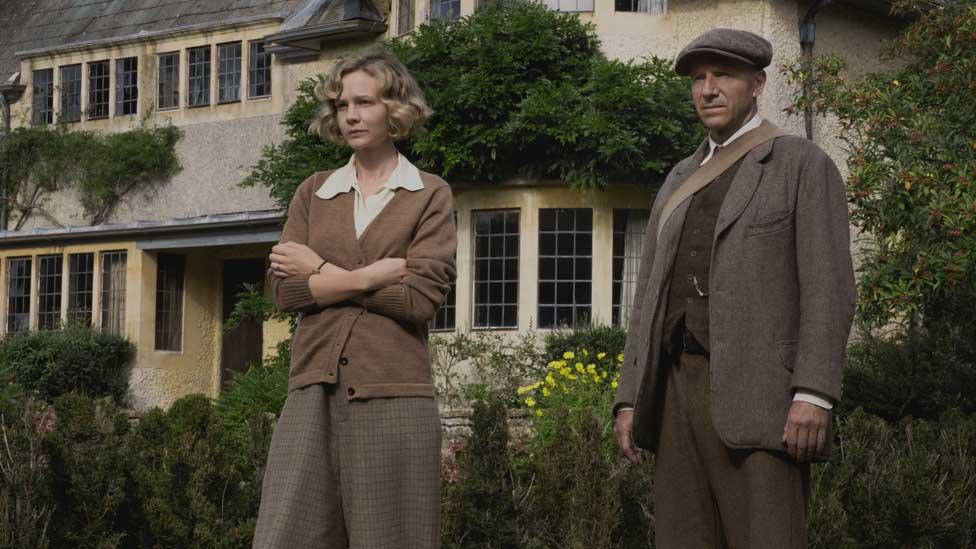Sutton Hoo: Victorian iron steamship hulk granted protection
- Published
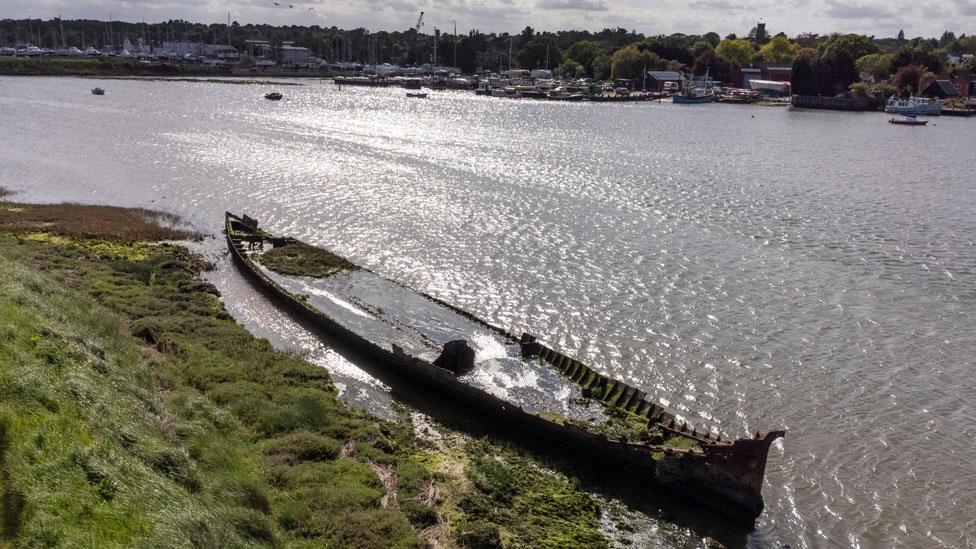
The hulk, which is not accessible to the public, can be seen across the River Deben from the quayside at Woodbridge
The remains of a Victorian iron steamship have been granted protection, external by Historic England.
The Lady Alice Kenlis was designed by Hercules Linton, external, the same shipwright behind tea clipper the Cutty Sark.
The hulk, on the River Deben at Sutton Hoo in Suffolk, is slightly longer than the site's famous Anglo-Saxon burial ship.
Historic England chief executive Duncan Wilson said it is "an important part of our seafaring history".

After working as a cargo vessel, it was converted into a suction dredger in 1913, arriving in the Deben in 1929
"Although we knew that the Lady Alice Kenlis was an interesting ship, we didn't appreciate just how historically important she was," said National Trust archaeologist Angus Wainwright. The Trust owns the Sutton Hoo estate, external.
The ship was named after Alice Maria Hill, daughter of the Earl of Hillsborough, external, who later married Lord Kenlis to become Lady Alice Kenlis in 1867.
It served as a cargo ship carrying cattle, goods and passengers between Northern Ireland, Scotland and England.
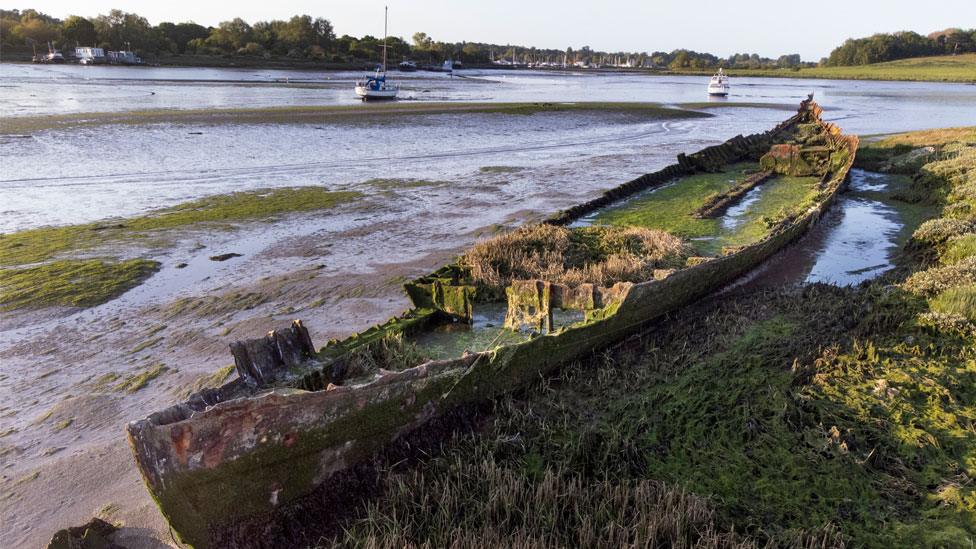
The hulk is the National Trust's second ship at Sutton Hoo - the other is the Anglo-Saxon burial ship excavated in 1939
Built by J&R Swan in Maryhill, Glasgow, and launched on 23 December 1867, its hull was heavily built in comparison to other iron ships of the time.
This was to allow the 39.6m (130ft) by 6m (19ft 10in) vessel to be more easily loaded and unloaded in shallow waters.
Historic England said the hulk was "important in our understanding of early iron ships, and its relationship to the Cutty Sark offers an insight into Linton's evolution of thought".
The Scottish shipwright later formed the shipbuilding company Scott and Linton, whose most famous vessel was the Cutty Sark, before going bankrupt in 1871.

The remains are called a hulk, not a shipwreck, as it was not subject to a wrecking event
After conversion to a suction dredger, the Lady Alice Kenlis was partially dismantled in the late 1930s or early '40s and the hulk can still be seen from the quay at Woodbridge.
Kay Yule, cabinet member for planning and coastal management at East Suffolk Council, described it as "an established and striking feature of the landscape".
"I'm thrilled that her historical significance is being recognised by Historic England," she said.
Protection by scheduling ensures the hulk gets protected by law.

Follow East of England news on Facebook, external, Instagram, external and Twitter, external. Got a story? Email eastofenglandnews@bbc.co.uk, external or WhatsApp us on 0800 169 1830
Related topics
- Published21 December 2022
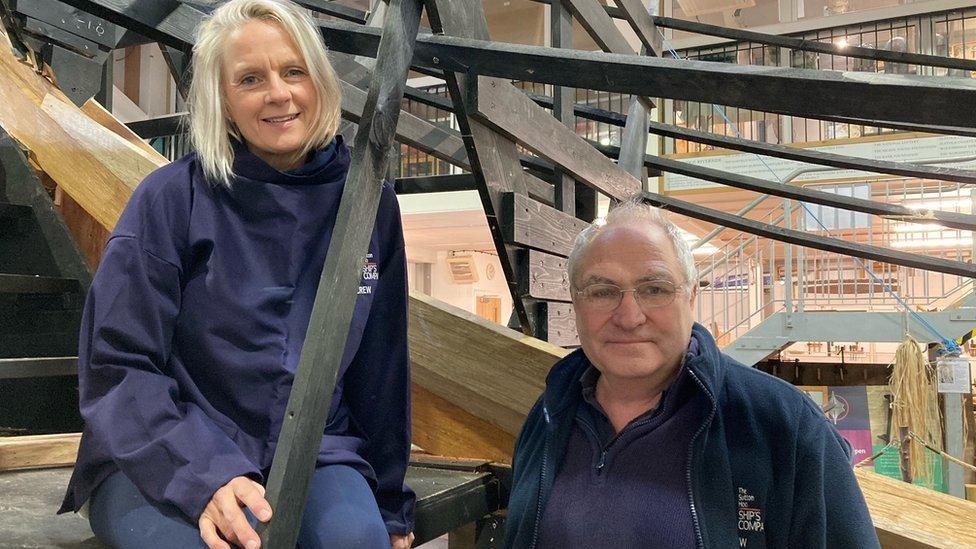
- Published8 June 2022

- Published19 May 2022
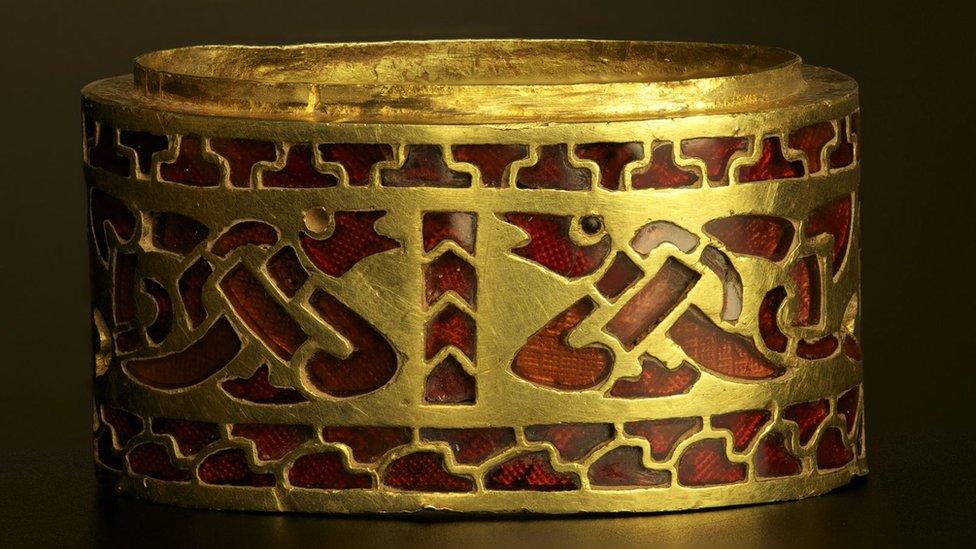
- Published17 January 2021
